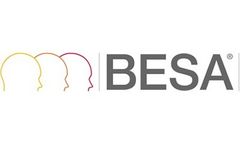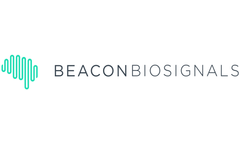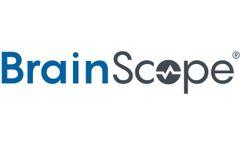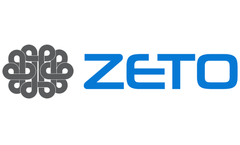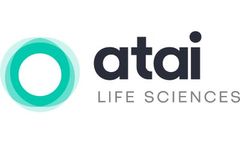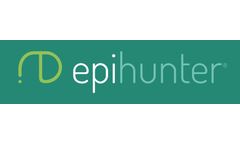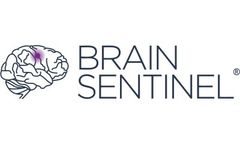Refine by
Eeg Technology Articles & Analysis
19 news found
EEG in everyday life: As scientists and researchers, we have asked ourselves – what happens in our brain when we play darts or table football? ...
EEG is standard of care in the clinical diagnosis and management of many neurologic diseases and sleep disorders, yet features of clinical significance often are difficult to extract from EEG data. Broader adoption of EEG technology has been further limited by labor-intensive workflows and variability in clinician expert ...
BrainScope®, a medical neuro-technology company focused on concussion and mild traumatic brain injury (mTBI) assessment, announced today that it had concluded both algorithm development and clinical validation studies in adolescent and young adult populations using its objective, EEG-based technology. ...
For the August installment of the Healthtech Leader of the Month series, we interviewed Aswin Gunasekar, founder and CEO of Zeto. Zeto is a device-driven platform for acquiring, accessing, and interpreting electroencephalograms (EEGs). An EEG is a test used to evaluate electrical activity in the ...
However, recent studies have shown that the technology may have useful applications for mental health disorders as it allows for a direct decoding of emotional experience from neural activity. In the case of Psyber, EEG-based BCI development will be enabled through a tailored software platform and a large patent portfolio, combined with atai's diverse compounds. ...
Electroencephalography (EEG) devices are incredibly helpful in diagnosing and monitoring certain brain disorders, such as epilepsy and strokes. However, they are not particularly user-friendly or convenient, with specialized technicians performing time consuming procedures, such as skin preparation, to get patients ready to undergo the procedure. A combination of messy gels and wires also makes ...
A typical EEG test consists of multiple electrodes attached to a patient’s scalp with adhesive. ...
Methodist Le Bonheur Healthcare (MLH) is the first hospital system globally to participate in a landmark study using a first-of-its-kind EEG device. EEG stands for electroencephalogram. EEG tests are conducted to detect problems in the brain that may be associated with certain brain disorders such as seizures, tumors or strokes. A typical ...
Epihunter is the first product that automatically detects absence seizures using wearable EEG technology. “The interest in our absence seizure tracker comes from all over the world. ...
Zeto, Inc., a privately held medical technology company that is transforming the Electroencephalography (EEG) experience for healthcare, today announced that it has raised $7.3 million in Series A financing led by Seraph Group and joined by Aphelion Capital, SV Tech Ventures and Shangbay Capital. ...
In March, BrainScope announced it had concluded both algorithm development and clinical validation studies in adolescent and young adult populations using its objective, EEG-based technology. The purpose of the studies was to create and validate an objective, personalized capability for assessment of concussion and readiness to return to activities in males and ...
Traditional EEG is used to observe seizures and diagnose epilepsy, sleep disorders, autism, stroke, concussion, and more. ...
The Company’s first product, BrainScope One (cleared as Ahead 300), incorporates a multi-modal, multi-parameter panel of assessment capabilities including EEG-based technology that is non-invasive for mildly presenting head-injured patients, 18-85 years old, within 3 days after injury and is not a replacement to CT scan. BrainScope’s ...
The Company’s first product, BrainScope One (cleared as Ahead 300), incorporates a multi-modal, multi-parameter panel of assessment capabilities including EEG-based technology that is non-invasive for mildly presenting head-injured patients, 18-85 years old, within 3 days after injury and is not a replacement to CT scan. BrainScope’s ...
The Company’s first product, BrainScope One (cleared as Ahead 300), incorporates a multi-modal panel of capabilities including EEG-based technology that is non-invasive for mildly presenting head-injured patients, 18-85 years old, within 3 days after injury and is not a replacement to CT scan. BrainScope’s technology platform ...
Using our proprietary AI and multi-modal technologies, we will rapidly ramp up our efforts on this important project. ...
The Company’s first product introduced in 2017, BrainScope One (cleared as Ahead 300), incorporates a multi-modal panel of capabilities including EEG-based technology that is non-invasive for mildly presenting head injured patients, 18-85 years old, within 3 days after injury and is not a replacement to CT scan. BrainScope’s ...
The SPEAC® System is the first FDA-cleared, non-EEG, physiological, signal-based system for seizure monitoring. ...
Brain Sentinel’s SPEAC® System demonstrated equivalence with the gold standard, video EEG, in detecting generalized tonic-clonic seizures (GTCS) using surface electromyography (sEMG). In a new study published on October 5, 2017, in the medical journal, Epilepsia, Brain Sentinel’s SPEAC® System which uses the surface electromyography (sEMG) biomarker demonstrated ...

